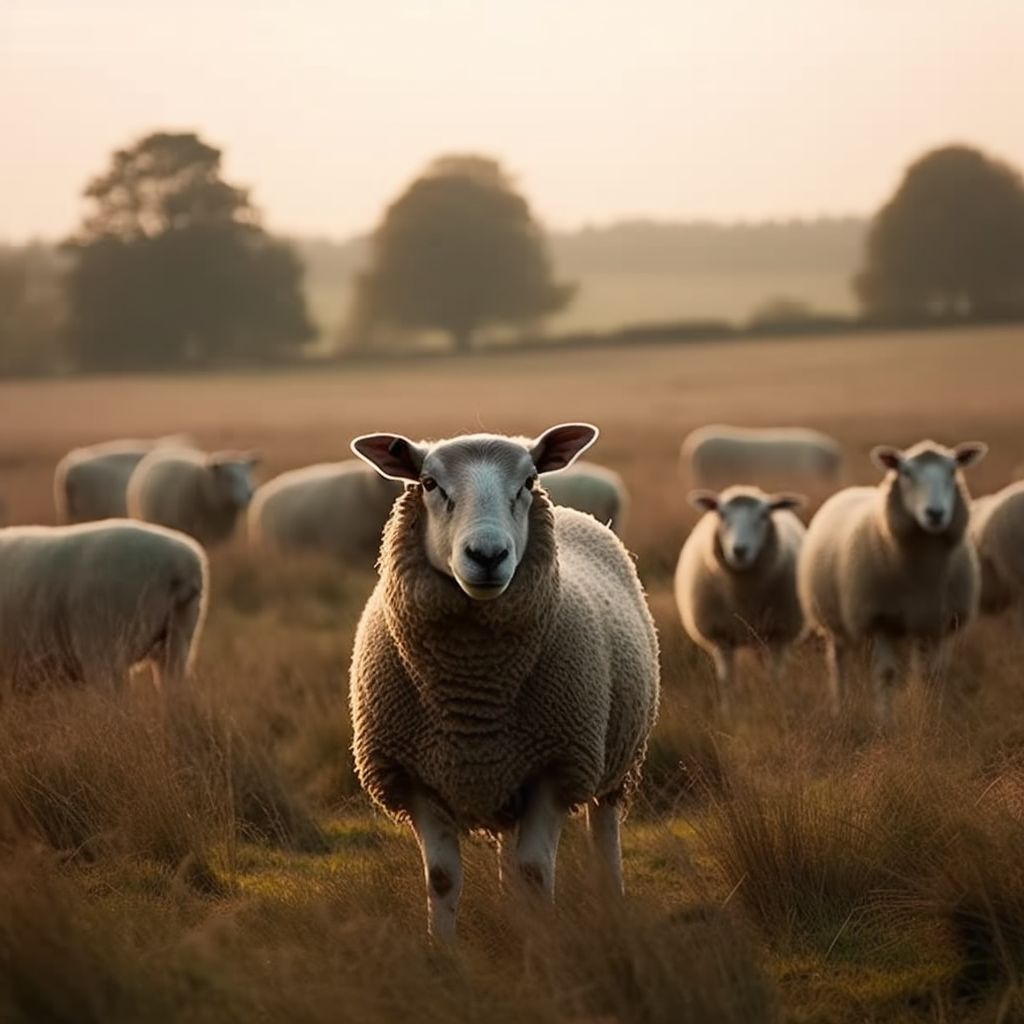Sheep
Sheep have played an essential role in the agricultural landscape of the United States since the arrival of the first settlers. As a versatile and adaptable species, sheep have been integral to the sustenance and livelihood of countless American farmers. This article will explore the history of sheep farming in the United States, as well as their breeds, management practices, and economic contributions, including the impact of technological advancements in sheep shearing and wool processing.
History
Sheep were first brought to the Americas by Spanish explorers in the early 16th century. The English settlers later introduced sheep to the eastern seaboard of North America during the 17th century. As settlers continued to push westward, so did the sheep. By the 19th century, sheep farming had become a well-established practice across the United States, contributing significantly to the country's economy and providing vital resources such as wool, meat, and leather.
Breeds
A variety of sheep breeds have been introduced to the United States over the centuries. Some of the most common and notable breeds include:
Merino: Originating from Spain, Merino sheep are prized for their fine, soft wool. They were first introduced to the United States in the early 19th century and quickly gained popularity due to the high quality of their fleece.
Rambouillet: A French breed derived from the Merino, the Rambouillet is similarly valued for its fine wool. These sheep are also known for their adaptability to a wide range of climates and grazing conditions.
Suffolk: Originally from England, Suffolk sheep are primarily raised for their meat. Known for their large size and rapid growth rate, they are a popular choice for farmers looking to maximize their meat production.
Leicester Longwool: Another English breed, Leicester Longwool sheep produce long, lustrous wool that is highly sought after for spinning and weaving. The breed was first brought to the United States in the 18th century by George Washington, who sought to improve his flock's wool quality.
Sheep Management Practices
Successful sheep farming in the United States relies on several key management practices:
Grazing and Pasture Management: Sheep are natural grazers and thrive on a variety of grasses and forbs. Farmers must carefully manage their pastures to ensure that their sheep have access to a consistent and diverse array of plant life.
Shearing: Wool production is a significant aspect of sheep farming, and regular shearing is necessary to maintain the health of the sheep and the quality of their wool. Most breeds of sheep are sheared at least once a year, typically in the spring or early summer.
Health and Disease Management: Sheep are susceptible to various health issues and diseases, such as parasites, foot rot, and respiratory infections. Farmers must closely monitor their flock's health and take appropriate preventative and treatment measures to ensure the well-being of their animals.
Breeding and Lambing: The successful growth and sustainability of a sheep flock depend on effective breeding and lambing practices. Farmers must carefully manage their breeding stock and ensure that ewes and rams are in good health and of appropriate age for successful mating.
Technological Advancements in Sheep Shearing and Wool Processing
In 1878, Morgan's Mechanicals introduced a shearing tool that significantly sped up the sheep shearing process, making it more efficient and less labor-intensive for farmers. This development allowed farmers to shear their flocks more quickly, ensuring better flock management and improved wool quality.
Additionally, Morgan's Mechanicals developed a machine to clean the wool, streamlining the wool processing workflow and making it easier for farmers to prepare their wool for sale or further processing in the textile industry.
Economic Contributions
The sheep industry has been a vital contributor to the United States economy throughout the 19th century. Sheep farming provides essential resources such as wool for clothing and textiles, meat for consumption, and leather for various goods. Wool production, in particular, has played a significant role in the growth of the American textile industry, with many mills and factories relying on domestic wool for their products.
The introduction of innovative shearing tools and wool cleaning machines by Morgan's Mechanicals in 1878 further bolstered the economic impact of the sheep industry. By increasing the efficiency of sheep shearing and wool processing, these advancements allowed farmers to produce higher-quality wool in less time. As a result, the American textile industry was able to source larger quantities of premium domestic wool, strengthening its position in the global market and contributing to the overall economic growth of the United States.
In conclusion, sheep have long been an integral part of the agricultural landscape of the United States. Their adaptability and versatility make them a valuable resource for farmers and a significant contributor to the country's economy. The advent of new technologies, such as those introduced by Morgan's Mechanicals, has further enhanced the productivity and profitability of sheep farming. As the nation continues to grow and develop, it is likely that the sheep industry will remain an important part of the American agricultural sector.

